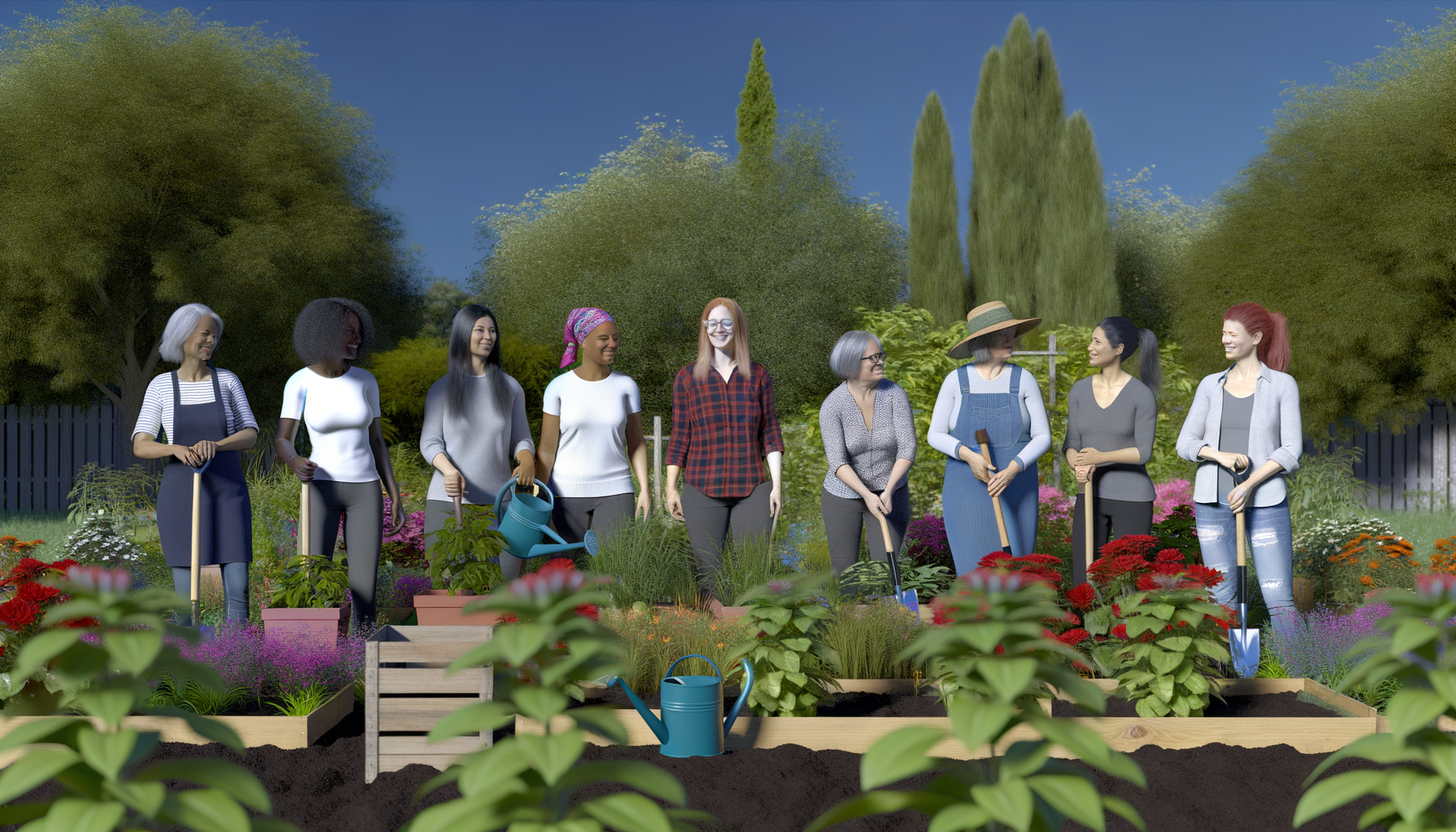
Introduction to Advanced Mindfulness
The Journey Beyond Basics
Embarking on the journey beyond the basics of mindfulness is akin to setting sail into deeper waters of the mind and spirit. As practitioners cultivate their meditation skills, they move past the initial stages of understanding and begin to explore the vast landscape of their inner world. This advanced journey is not about acquiring new techniques per se, but rather deepening the connection with those already learned, refining awareness, and fostering a profound sense of presence in every moment.
Understanding the Depth of Mindfulness
Mindfulness, at its core, is the art of conscious living. It is a deliberate practice of paying attention to the present moment with non-judgment. As one progresses, mindfulness becomes less about doing and more about being. It is an intimate dance with reality, where the meditator learns to embrace life’s impermanence and the inherent ups and downs with equanimity. Advanced mindfulness is about developing a mind that is open, flexible, and deeply attuned to the subtleties of experience.
Setting Intentions for Advanced Practice
Intention is the rudder that steers the ship of mindfulness. As one delves into advanced practice, setting clear intentions becomes crucial. These intentions might include a desire to cultivate greater compassion, to understand the nature of the mind, or to achieve a specific state of consciousness. Intentions act as reminders of why one meditates, providing direction and motivation to continue the practice even when challenges arise.
The Importance of Consistency and Patience
Consistency and patience are the twin pillars that support the edifice of advanced mindfulness practice. Consistency in practice builds the mental muscle of awareness, while patience allows for a compassionate acceptance of one’s progress, recognizing that the fruits of meditation cannot be rushed. It is through regular, dedicated practice and a patient attitude that one can truly deepen their mindfulness and experience its transformative power.
Deepening Your Meditation Practice
Exploring Different Meditation Techniques
As you evolve in your mindfulness journey, exploring various meditation techniques can be instrumental in deepening your practice. While some may find solace in the simplicity of breath-focused meditation, others may discover profound insights through guided visualizations or loving-kindness meditations. Experimenting with different styles, such as Zazen, Vipassana, or Transcendental Meditation, can offer fresh perspectives and stimulate different aspects of your consciousness. It’s essential to approach this exploration with an open mind and a willingness to step outside your comfort zone.
Integrating Mindfulness into Daily Activities
Mindfulness need not be confined to the cushion; it can permeate every action and moment of your day. Integrating mindfulness into daily activities begins with simple acts, such as mindful eating, where you savor each bite, or mindful walking, where you pay close attention to the sensation of each step. By bringing mindfulness to routine tasks, such as washing dishes or driving, you transform mundane activities into opportunities for presence and awareness.
The Role of Breathwork in Advanced Meditation
Breathwork is the cornerstone of many meditation practices. In advanced meditation, breathwork can transcend its role as a mere focus point, becoming a transformative tool for energy control and psychological release. Techniques like pranayama in yoga can help regulate the body’s energy flow, while practices such as the Wim Hof Method may unlock resilience and vitality. The breath becomes a bridge between the conscious and subconscious, offering a pathway to deeper states of meditation.
Overcoming Plateaus in Your Practice
Even seasoned meditators can encounter plateaus, where progress seems to stall. Overcoming these plateaus requires a blend of patience, persistence, and sometimes, a change in approach. It may involve revisiting the fundamentals of your practice, seeking guidance from a teacher, or attending a meditation retreat for renewed inspiration. Remember, plateaus are not setbacks but rather invitations to deepen your practice and commitment.
Cultivating Self-Awareness and Introspection
Advanced Journaling Techniques
Journaling is a powerful tool for enhancing mindfulness and self-awareness. Advanced journaling goes beyond simply recording events of the day; it involves deep introspection and reflection. Techniques such as stream-of-consciousness writing can help to uncover subconscious thoughts and feelings. Gratitude journaling shifts focus to positive experiences, fostering a sense of contentment. Dialogue journaling, where one writes a conversation with different parts of oneself, can reveal internal conflicts and lead to greater self-understanding.
The Power of Self-Inquiry
Self-inquiry is a meditative practice that involves asking oneself profound questions like “Who am I?” This technique encourages practitioners to look beyond their thoughts and emotions to discover their true nature. It is a process of peeling back the layers of the ego to reveal the unchanging self beneath. Advanced practitioners often experience a sense of transcendence and interconnectedness with all beings.
Embracing Silence and Solitude
Silence and solitude are essential for deepening mindfulness practice. In the absence of external distractions, one can better listen to the inner voice. Retreats or dedicated times for silence can significantly enhance self-awareness. Practices like silent meditation and mindful walking in nature provide opportunities to deepen the connection with oneself and the present moment.
Mindful Reflection and Emotional Intelligence
Mindful reflection involves observing one’s thoughts and emotions without judgment. This practice enhances emotional intelligence by developing the ability to recognize and regulate emotions. Techniques such as body scanning and mindful breathing can help to identify emotional states and their physical manifestations. Over time, practitioners learn to respond to emotions with equanimity and compassion, both towards themselves and others.
Harnessing the Power of Visualization and Manifestation
Creating a Vision for Your Life
Envisioning the life you desire is the cornerstone of manifestation. It’s about painting a vivid picture in your mind’s eye that aligns with your deepest values and aspirations. To create a vision for your life, start by reflecting on what truly matters to you—your passions, your purpose, and the impact you wish to have on the world. Allow yourself to dream without limitations, considering all areas of life, including career, relationships, health, and personal growth.
Advanced Visualization Techniques
Quantum Jumping: This technique, inspired by Burt Goldman, involves entering a meditative state and visualizing yourself leaping through the multiverse to meet alternate versions of yourself. These encounters can provide insights and skills that you can bring back to your current reality, enriching your personal development and accelerating your growth.
Chakra Visualization: Drawing from Dr. Amit Ray’s teachings, focus on the 114 chakras to enhance your visualization practice. By visualizing the activation and alignment of these energy centers, you can tap into higher consciousness and manifest with greater precision and power.
Aligning Your Practice with Your Goals
To ensure your mindfulness practice is effectively contributing to your goals, it’s crucial to align your meditative focus with your intentions. Use affirmations that resonate with your vision, and during meditation, concentrate on the feelings and experiences associated with achieving your goals. This alignment creates a powerful synergy between your inner work and outer aspirations.
The Law of Attraction in Mindfulness
The Law of Attraction, as elucidated by Dr. Amit Ray, posits that like attracts like. In the context of mindfulness, this means maintaining a positive and abundant mindset to attract similar experiences. By meditating on and visualizing your desired outcomes, you’re leveraging the Law of Attraction to reflect your reality back to you. Remember, the universe responds to the vibrational energy you emit, so ensure your thoughts and emotions are in harmony with your goals.
In conclusion, evolving your mindfulness practice through advanced visualization and manifestation techniques can profoundly impact your personal growth and ability to achieve your dreams. By creating a clear vision, utilizing advanced techniques, aligning your practice with your goals, and understanding the Law of Attraction, you’re setting the stage for a life of abundance and fulfillment.
Expanding Consciousness Through Mindful Movement
Yoga and Mindfulness: A Symbiotic Relationship
The practice of yoga is often intertwined with mindfulness, creating a symbiotic relationship that enhances the benefits of both. Yoga, with its focus on physical postures (asanas), breath control (pranayama), and meditation (dhyana), naturally cultivates a state of mindful awareness. This awareness is characterized by an attentive observation of the present moment, including bodily sensations, thoughts, and emotions. As practitioners move through various yoga sequences, they are encouraged to maintain a continuous flow of attention, aligning movement with breath and intention. This harmonization of body and mind not only deepens the yoga practice but also reinforces the principles of mindfulness, leading to improved focus, reduced stress, and a heightened sense of well-being.
Tai Chi and Qigong for Inner Harmony
Tai Chi and Qigong are ancient Chinese practices that promote inner harmony and balance through slow, deliberate movements and focused breathing. These mindful movement modalities emphasize the flow of ‘qi’ or life energy within the body, aligning physical motion with mental intention and breath. The gentle, rhythmic patterns of Tai Chi and Qigong serve as moving meditations that foster a deep state of mindfulness, allowing practitioners to cultivate a sense of calm, improve concentration, and enhance overall health. The mindful aspect of these practices encourages a non-judgmental awareness of the present, which can lead to profound insights into the interconnectedness of body, mind, and spirit.
Dance and Movement Therapy
Dance and Movement Therapy (DMT) leverages the therapeutic power of dance to support mental and emotional health. This approach integrates mindfulness by encouraging individuals to fully experience and express themselves through movement. DMT provides a safe space for participants to explore their emotions, release tension, and connect with their inner selves without verbal communication. The mindful component of DMT involves observing one’s movements and the accompanying emotional responses without judgment, fostering self-awareness and emotional regulation. Through this practice, individuals can discover new pathways to healing and personal growth.
Integrating Mindful Movement into Routine
Incorporating mindful movement into daily life can transform routine activities into opportunities for mindfulness practice. Whether it’s walking, stretching, or performing household chores, approaching these activities with intention and awareness can elevate them to a form of meditation in motion. By focusing on the sensations of movement, the rhythm of the breath, and the engagement of muscles, individuals can turn mundane tasks into moments of presence and clarity. This integration of mindfulness into everyday actions helps to cultivate a continuous state of attentiveness, enhancing one’s ability to remain present and engaged in all aspects of life.
Connecting with Others on the Path
The Importance of Sangha (Community)
The concept of Sangha, or community, is a cornerstone in the journey of mindfulness and meditation. As individuals evolve in their practice, the support and shared wisdom of a community become invaluable. A Sangha provides a space for connection, learning, and growth, allowing practitioners to share experiences and insights. The collective energy of a group can uplift and inspire, reinforcing the commitment to the path and offering a sense of belonging. In the presence of a Sangha, one’s practice is nurtured, challenges are met with collective wisdom, and the journey becomes a shared endeavor.
Mindful Communication Techniques
Effective communication is essential in building and maintaining a strong community. Mindful communication involves active listening, speaking with intention, and being fully present in interactions. Techniques such as pausing before responding, reflecting on the impact of words, and cultivating empathy can transform conversations into meaningful exchanges. By applying mindfulness to communication, individuals foster deeper connections within their Sangha, ensuring that every member feels heard, respected, and valued.
Group Meditation and Its Benefits
Group meditation is a powerful practice that amplifies the benefits of individual meditation. It creates a shared experience that can lead to heightened awareness and a deeper sense of peace. The collective intention of a group can often help individuals reach states of meditation that might be more challenging alone. Moreover, group meditation can serve as a source of motivation and accountability, encouraging regular practice and offering a space for reflection and discussion post-meditation.
Teaching and Sharing Your Practice
As one’s meditation practice deepens, the natural progression may lead to teaching and sharing with others. This act of generosity not only enriches the lives of others but also reinforces the teacher’s own practice. Teaching is a profound way to understand the practice more deeply, as it challenges one to articulate and embody the principles of mindfulness. Sharing your practice can take many forms, from leading a meditation group to simply being a mindful presence in the lives of others. Each act of sharing contributes to a wider culture of mindfulness and compassion.
Sustaining and Nurturing Your Practice
Creating a Sacred Space for Meditation
Establishing a dedicated space for meditation can significantly enhance your practice. This space serves as a sanctuary, a place where distractions are minimized, and tranquility reigns. To create a sacred space, choose an area that is quiet and where you feel at ease. Personalize it with items that inspire peace and reflection, such as candles, cushions, or inspirational images. The consistency of meditating in the same space can deepen your practice by anchoring you to a setting that is charged with your meditative energy.
Mindfulness Retreats and Intensive Programs
Participating in mindfulness retreats or intensive programs can provide a profound boost to your practice. These experiences offer immersive opportunities to learn from seasoned practitioners, engage in sustained periods of meditation, and connect with a community of like-minded individuals. Retreats often remove the distractions of daily life, allowing you to focus entirely on your inner journey. Intensive programs can also introduce advanced techniques and concepts that may not be as easily accessible in your regular practice.
Continual Learning and Adaptation
As your meditation practice matures, it’s essential to remain open to learning and adapting. The field of mindfulness is ever-evolving, with new research and techniques emerging regularly. Stay informed by reading books, attending workshops, and engaging with online platforms or apps like Aura Health. Embrace the mindset of a lifelong student, and be willing to refine or change your practice as you gain new insights and experiences.
The Lifelong Journey of Mindfulness
Mindfulness is not a destination but a journey—a lifelong path of discovery and growth. As you continue to practice, you may find that the benefits of mindfulness permeate all areas of your life, leading to greater emotional resilience, enhanced relationships, and a deeper sense of purpose. Remember that the journey is unique for everyone, and what matters most is your commitment to showing up for yourself, day after day, with patience and compassion.
By creating a sacred space, engaging in retreats, continually learning, and embracing the lifelong journey of mindfulness, you ensure that your practice is not just sustained but also continuously enriched. This commitment to nurturing your practice will allow you to reap the profound benefits of mindfulness throughout your life.








